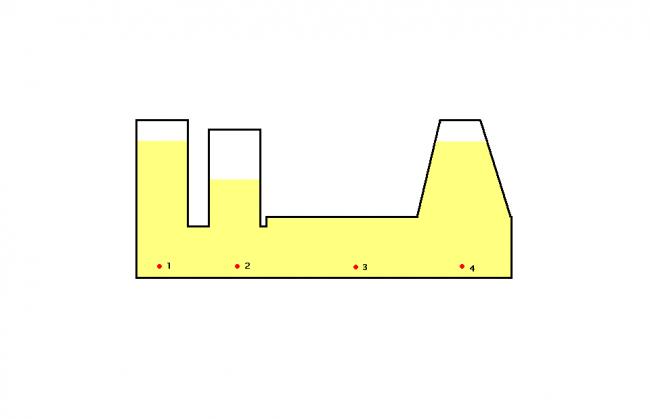In a static situation,
p1 = p2 =p3.........
p1 = P01 + (rho)gh1
where P01 is the pressure of air above 1, h1 is the height of liquid above h1.
similarly ,
p2 = P02 + (rho)gh2
h1 and h2 can be different but P01 and P02 will adjust to make p1=p2
I just dont know how to use pascal's equal height-equal pressure law in cases where the point of considerations are at same height BUT the level of liquid above each of them is different from other ..
for eg : PLEASE SOLVE THE QUESTION BELOW -> Find the increasing order of pressures at points 1,2,3,4.

arrey SOMEONE PLS ANSWER THIS..!!!!!!!!!!!!!!!!![201]
In a static situation,
p1 = p2 =p3.........
p1 = P01 + (rho)gh1
where P01 is the pressure of air above 1, h1 is the height of liquid above h1.
similarly ,
p2 = P02 + (rho)gh2
h1 and h2 can be different but P01 and P02 will adjust to make p1=p2
atmospheric pressure wud be the same in all cases .. conceptual lapses ?